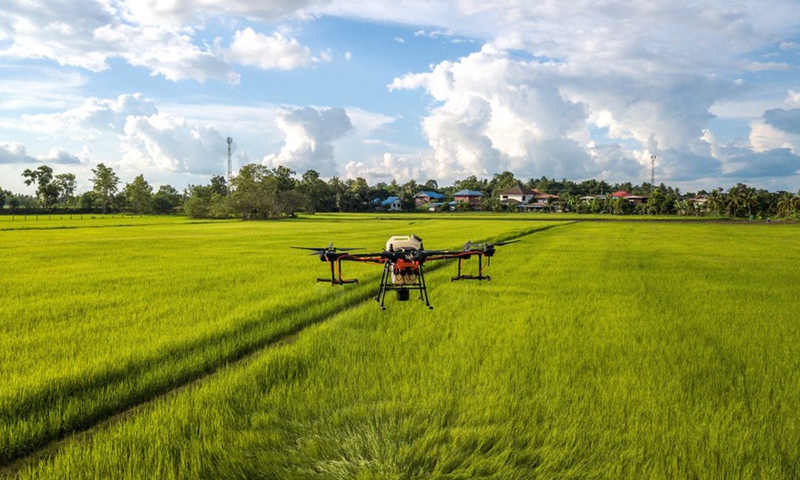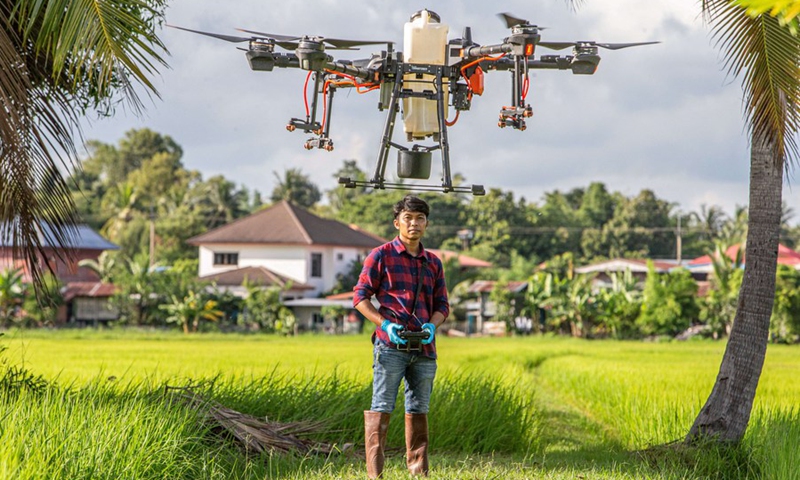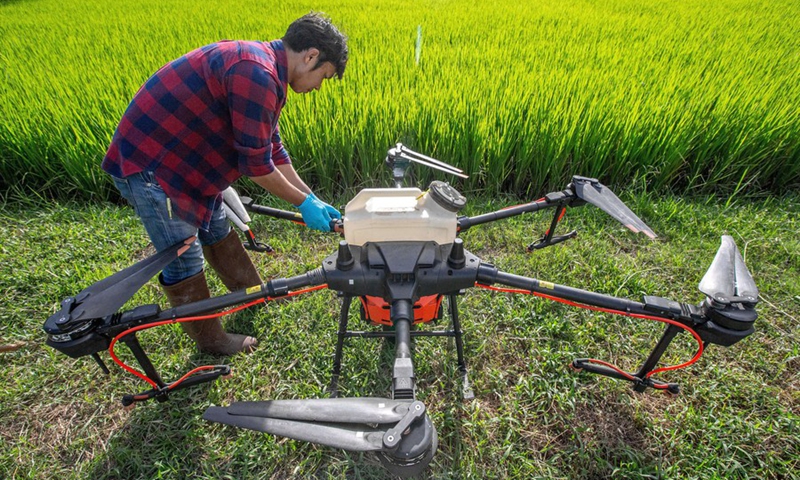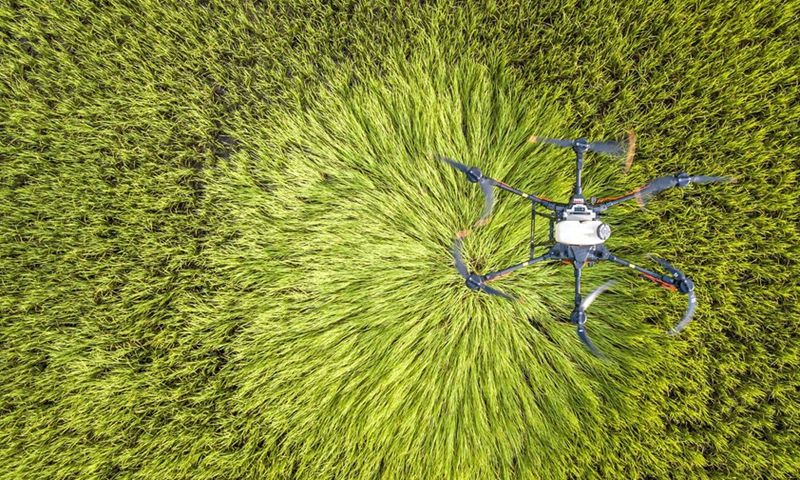
Aerial photo taken on Aug. 1, 2022 shows a DJI agricultural drone spraying pesticides in Roi Et, Thailand.(Photo: Xinhua)

A Thai farmer operates a DJI agricultural drone in Roi Et, Thailand, on Aug. 1, 2022.(Photo: Xinhua)

A Thai farmer checks a DJI agricultural drone in Roi Et, Thailand, on Aug. 1, 2022.(Photo: Xinhua)

Aerial photo taken on Aug. 1, 2022 shows a DJI agricultural drone spraying pesticides in Roi Et, Thailand.(Photo: Xinhua)
As a child, Nikorn Hanrasa used to watch his grandparents plow their rice farm with water buffaloes, and harvest by hand. His parents have switched to tractors, while he now uses a drone to spray pesticide on his field in Roi Et province, northeastern Thailand.
The 43-year-old, who now grows rice on about 30 rai (4.8 hectares) of land, returned to his family farmwork after the pandemic forced him out of a job in the capital Bangkok in late 2020.
Fascinated by aerial photography using a drone, Nikorn got interested in the idea of drones being used for farm applications. He bought a DJI agricultural drone and started a new career -- an agricultural drone pilot.
"Young people are now reluctant to engage in the laborious farm work, while the middle-aged and elderly form the backbone of agricultural cultivation in our village. Using the drone can make the farmwork easier, safer and more efficient," Nikorn said.
Nikorn used the drone to spray pesticide, fertilizer and growth hormone. "With the drone, I spray 40-50 rai of crops every day, and can spray crops precisely and effectively. Without it, people could only do less than 10 rai," he said.
Being an agricultural drone pilot, Nikorn charged 100 baht (about 2.83 U.S. dollars) for spraying per rai of land. "I now earn more than working in Bangkok, and can spend more time with my family."
Agriculture is of great importance to the Thai economy, with nearly half of the country's population engaged in the sector, according to data from the Ministry of Agriculture and Cooperatives. However, the pandemic restrictive measures posed a threat to the industry.
For Aroon, 63, who owns 30 rai of durian orchard in southern Thailand's Chumphon province, labor was one of the biggest challenges. Because of the pandemic, labor was hard to get. "I tried to use a drone to spray pesticide and found it's really (more) efficient than manpower."
"With the drone, I not only can avoid pesticide poisoning, but also save money on labor," he said, adding that he could save about 300,000 baht (about 8,470 dollars) on labor each year by using the drone.
These came amid the Southeast Asian country's increasing efforts to shift from traditional farming towards modern farming.
The digitalization of agricultural value chains in Asia-Pacific is being driven by factors including demographic changes, technological progress, climate change and the COVID-19 pandemic, according to the UN Food and Agriculture Organization (FAO).
Precision agriculture and agricultural drones are key digital-based solutions reshaping farming in the region. "They help farmers produce more with less water, land, inputs, energy and labor, while protecting biodiversity and reducing carbon emissions," the FAO said in a report on digitalization in agriculture.
DJI, a drone giant based in Shenzhen in southern China, tapped into Thailand's agricultural drone market in 2016, and has witnessed fast expansion in sales and seen great growth potential.
"Thailand has become our largest overseas market in terms of agricultural drone shipment this year," said Chen Tao, head of DJI agriculture sales department.
Taking advantage of China's experience in agricultural drone application and tailoring its solutions to the local conditions, the Shenzhen-based company hopes to use its technology and experience to serve more farmers around the world, Chen said.
